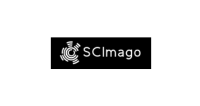USE OF IMAGEJ, SMARTPHONE CAMERA, AND LIGHT MICROSCOPE TO EVALUATE STALLION SPERM CONCENTRATION
DOI:
https://doi.org/10.5380/avs.v25i3.71839Palavras-chave:
semen, sperm counting, equine, software, cell phoneResumo
The aim of this study was to analyze the concentration of stallion sperm using ImageJ, a light microscope and cell phone camera attached with an adapter. Samples (108) of semen were analyzed with a hemocytometer (Neubauer) and ImageJ software (ImageJ) using photos of the same chamber after counting. Of these samples, 19 were also analyzed by a commercial Computer-assisted sperm analysis (CCASA). The results obtained with ImageJ and CCASA had average percent variation from Neubauer calculated. Correlation between methods and Neubauer were established and a Bland-Altman test was used to verify proximity of the methods. ImageJ overestimated the concentration found by the Neubauer in 2.5%, while CCASA overestimated in 165.7%. The correlation between ImageJ and Neubauer was positive (r=0.99, P<0.0001). Bland-Altman test resulted in a bias close to zero and a range of 30 x 106 cells/mL, indicating proximity of values obtained with ImageJ and Neubauer. Because of variations in the Neubauer chamber itself, the difference between this method and ImageJ was acceptable. For CCASA it resulted in a high bias and a range that went from -52.4 to 335.7 x 106 cells/mL, demonstrating overestimation clinically significant between methods. The concentration of equine semen can be analyzed with ImageJ using the tool “grid” and “analyze particles” in photos taken in a light microscope and cell phone camera. The results obtained were close to those obtained with a hemocytometer, without the need for manual counting.
Downloads
Publicado
Como Citar
Edição
Seção
Licença
Autores que publicam nesta revista concordam com os seguintes termos:
- Autores mantém os direitos autorais e concedem à revista o direito de primeira publicação, com o trabalho simultaneamente licenciado sob a Creative Commons - Atribuição 4.0 Internacional que permite o compartilhamento do trabalho com reconhecimento da autoria e publicação inicial nesta revista.
- Autores têm autorização para assumir contratos adicionais separadamente, para distribuição não-exclusiva da versão do trabalho publicada nesta revista (ex.: publicar em repositório institucional ou como capítulo de livro), com reconhecimento de autoria e publicação inicial nesta revista.
- Autores têm permissão e são estimulados a publicar e distribuir seu trabalho online (ex.: em repositórios institucionais ou na sua página pessoal) a qualquer ponto antes ou durante o processo editorial, já que isso pode gerar alterações produtivas, bem como aumentar o impacto e a citação do trabalho publicado.













